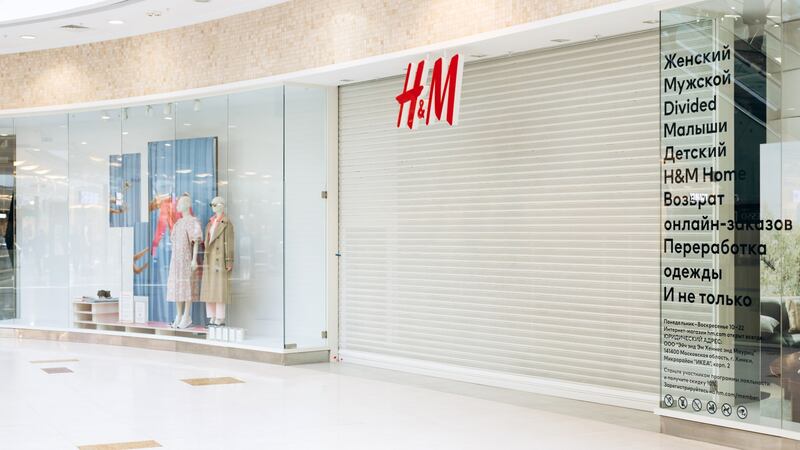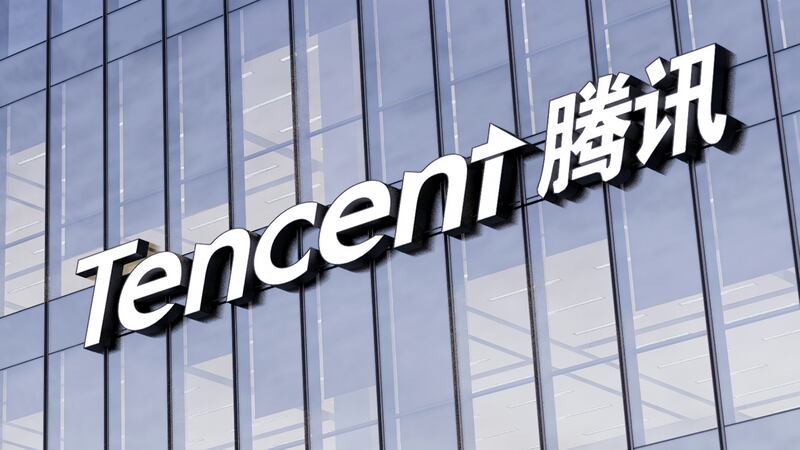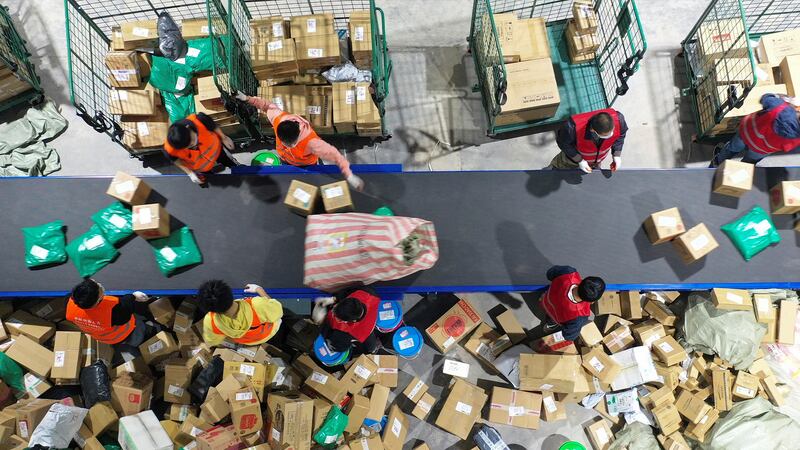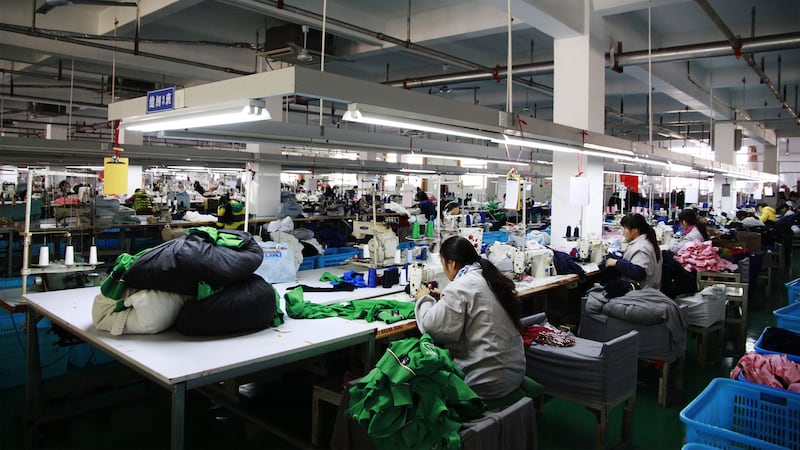
The Business of Fashion
Agenda-setting intelligence, analysis and advice for the global fashion community.

Agenda-setting intelligence, analysis and advice for the global fashion community.

The factories that keep the world supplied with underwear are dotted around the globe, but those in one country continue to play an outsized role in this most intimate of industries. Not only is China the world’s largest exporter of underwear and lingerie, but it also hosts the largest trade show of its kind for the sector.
This year’s China International Brand Underwear Fair and China Intimate Apparel Culture Week (SIUF) finally kicked off in Shenzhen on August 10, after months of delays. The country’s dynamic zero-Covid policy shrunk foreign participation, but the three-day long event still featured hundreds of domestic suppliers and international brands. Despite travel restrictions, organisers reported over 89,000 visits.
Shenzhen was a fitting setting for the fair, as it is located in the heart of China’s largest lingerie manufacturing base. Thousands of factories in southern Guangdong province and the wider Pearl River Delta region produce everything from bras and panties to bathrobes for both international and domestic brands. The region has been China’s main hub for intimate apparel for decades, with factories in cities like Shantou responsible for the lion’s share of output. Another city in the region, Gurao, reportedly produced two billion bras annually in its heyday, giving it the nickname “bra town.”
But more recently China’s intimate apparel industry has been hit by waves of near-shoring by international brands and off-shoring by domestic producers, setting the scene for new specialist hubs to emerge across the country.
ADVERTISEMENT
At the other end of the country from Guangdong, there is a small county in Jiangsu province transforming itself into a specialised base for lingerie manufacturing. Guanyun county was until recently an impoverished farming community known for producing rice and wheat. Now reporters flock to the region to cover lingerie fashion shows held in a community that the local government promotes as “China’s lingerie capital.”
Lei Congrui, 31, is at the forefront of Guanyun’s transformation. Lei’s father died when he was young, and his mother supported the family by running a children’s clothing shop. In 2007, he was a just teenager selling small consumer goods online in his hometown, when he got his start in the new trade. After noticing that Lei was selling condoms online, a buyer once asked if he sold sexy lingerie.
“I said yes without really knowing what it was, and then started sourcing from other manufacturers,” Lei said. “Demand picked up and we started manufacturing ourselves.” He then dropped out of college to focus on building the company.
From a small workshop manned by just seven relatives, Lei’s brand Midnight Charm has grown into a 400-person operation. Industrial sewing machines line the factory floor and plastic bags of notions hang from hooks above each machine. The mostly female employees in their 30s and 40s stitch together revealing chemises and sexy outfits.
“We didn’t know how to make lingerie at first,” admitted Lei. “We just looked at the samples and figured out how to recreate them on our own…At first the quality was really bad, but because lingerie was still a novelty for our Chinese online buyers, low prices were more important than quality.”
After seeing Lei’s success, more than 500 more small companies in Guanyun have come to employ 20,000 people to produce sexy lingerie, mostly for the local online market in small cottage industry workshops. The local government says these factories are producing more than $300 million worth of lingerie products annually and, according to a report by AFP, the county produces 70 percent of domestic Chinese demand for sexy lingerie.
Lei has expanded his customer base much further than others, counting buyers from China, Africa and Europe — but half of his production is for the American market, including for small Amazon sellers and China’s ultra fast fashion giant Shein. Now online retailers send him samples and his team reverse-engineers them.
“We haven’t been able to meet demands of bigger more established brands,” Lei said. “We are still a relatively small factory. Those bigger brands are making a wider range of underwear and lingerie, but we are focused on specialty sexy lingerie.”
ADVERTISEMENT
Despite his humble demeanour, Lei has a factory that is now turning over three to five million pieces a year, bringing in millions of dollars in annual profits.
Lei’s ambition is to eventually build Midnight Charm into a respected intimate apparel brand — a Chinese Victoria’s Secret, he said — with a dedicated R&D design team.
Industry insiders say that Guanyun county’s transformation is emblematic of a trend in China’s lingerie industry as production bases diversify.
Renaud Anjoran, CEO of Sofeast, a company providing auditing and quality assurance to international brands, started visiting lingerie manufacturing facilities in 2005. Lingerie production has been traditionally most dense in the southern Pearl River Delta, he said, because that is where the industry first set up base after moving to mainland China from Hong Kong in the 80s and 90s.
Today the region maintains a high concentration of mid- to high-end lingerie manufacturers and has developed into a strong base for lace, accessories and notions that supply the industry. It remains a centre of production for bras, he said. “It’s very manual work and you need people who are used to doing the manual operation of sewing the cups,” he said. “It is a relatively complicated operation. You cannot train people to do it in in a couple of weeks.”
Nevertheless, the industry has become more fragmented, he said, driven in part by rising labour costs over the past two decades. “Very often they go to an inland province like that because the owner of the factory is [originally] from that town [or there’s some kind of] connection,” he said. “It’s tempting for them to relocate completely or to open a second factory in a faraway [location] because they can [still] see the trends [but]…there’s more and more competition on pricing.”
Elaine Guo, design director of Passionworks, a specialty supplier of silk lingerie and pyjamas for the Chinese market, said that international brands will look to at least three different regions in China for manufacturing. Aside from the Pearl River Delta, she said, a manufacturing hub has developed in Zhejiang province just south of Shanghai where some factories are producing similar or higher quality than those in Guangdong province. Up north in Dalian, yet another hub has developed that mostly exports to Japan.
Guo produces upscale silk pieces for Chinese lingerie and underwear brands like Ubras, Maniform, and Neiwai. Her operations are in Shanghai, but she says the costs have risen there and workers are less willing to stay. “A lot of people left before the Covid lockdown. A lot of people went back to their hometowns,” she said.
ADVERTISEMENT
Inland regions are also experiencing rising labour costs for manufacturers. “At first our workers earned 1000 yuan ($148) a month, but now they take home 6 to 7,000, and with overtime they can bring in over 10,000 ($1456),” said Midnight Charm’s Lei in Jiangsu province.
SIUF’s business director Chuck Ge says this is an industry-wide trend. “In recent years I do see many manufacturers shifting to other regions in inner China or ASEAN (Association of Southeast Asian Nations) countries, for the lower labour cost or cheaper land,” he said.
China accounts for more than 35 percent of the $10.1 billion export trade of global intimate apparel, according to 2020 data from MIT’s Observatory of Economic Complexity. Following China are Vietnam, Bangladesh, Sri Lanka, Germany and other countries in Asia and Europe, but none of them account for more than 10 percent of the trade. Exports from Italy, France and Austria, where much of the higher-end production takes place, are further down the league tables, accounting for less than 3 percent each.
But even as countries like Bangladesh and Vietnam reap the rewards in terms of production capacity, China is growing its design expertise. Many Chinese intimate apparel companies are relocating their headquarters and design departments from domestic regional production hubs to China’s mega-cities, said Guo.
China’s future as a leading lingerie manufacturing hub is less certain than it was a few years ago.
In addition to concerns over exposure to alleged forced labour in supply chains in China’s Xinjiang region, the pandemic has impacted the international perception of the country’s manufacturing industry in ways that could prompt international brands to look elsewhere for options. Guo suggests that recent lockdowns have created disruptions and growing uncertainty about the reliability of Chinese supply chains.
While these and other factors may lead to a further exodus of lingerie manufacturing, Anjoran says there can be no complete exit from China.
“When you chase the lowest cost, there’s always somebody cheaper than you,” he said. “When it’s simple products, they went to Bangladesh or other places like this. But whenever the product involved bras, it has been much harder for them to leave China.”
Guo argues that the sheer number of factories producing lingerie and suppliers offering components as well as textiles and accessories makes China a good place to stay. The clustering of the industry over decades and the full supply chain of fabrics, notions and assembly is not so easily reproduced elsewhere.
That may be why some leaders in the mass market lingerie segment like Triumph and Marks & Spencer keep some production in China. Luxury lingerie brands often have a range that is produced in Asia and a range that is produced elsewhere, Anjoran said.
Some high-end players have been near-shoring production at China’s expense. Ten years ago, Reuters reported that Italian luxury lingerie brand La Perla was moving their underwear and nightgown production away from China to facilities in Turkey, Tunisia, and Portugal. La Perla’s website now says their main production facility is in Italy and they have facilities in Portugal and other EU member countries, while continuing to source some fabrics from Asia.
Hong Kong fashion lingerie maker Hop Lun, whose founder is Swedish, manufactures in Jiangxi and Guangdong provinces for their Chinese brands, but revealed in a Financial Times report earlier this year that a significant part of their production has moved to Indonesia and Bangladesh because of US-China trade tensions and China’s rising labour costs. The company is also reportedly looking to move production lines to Europe and North America to be closer to western clients like Marks & Spencer and H&M.
But there is another way that China could either regain lost ground or maintain its position as a leading lingerie exporter. Across the entire fashion industry, many Chinese producers have already pivoted from OEM (original equipment manufacturing) to ODM (original design manufacturing) before shifting further up the value chain to OBM (original brand manufacturing). But some local brands that didn’t start in a factory now have the potential to go global by leveraging Chinese lingerie expertise and supply chains.
Chinese lingerie brands like Neiwai, Ubras, and Neitangpai are using strong brand stories to appeal to a cosmopolitan consumer in China, suggests Daxue Consulting analyst Zoe Lu, and are aiming to take market share from incumbents like Aimer, Gujin and ManiForm. Some of these newer brands, including Neiwai, whose marketing campaigns focus on female empowerment and body positivity, have already started actively targeting the international market.
In an apparent bid to do so, the brand even partnered with an Italian textile company to source some of its fabrics, a reminder that while China retains some of its strength in lingerie production, the sector’s supply chain is increasingly global.
by Zoe Suen
时尚与美容
FASHION & BEAUTY

H&M Returns to Tmall After Last Year’s Xinjiang Backlash
The Swedish fast fashion giant re-opened its flagship on the Alibaba-owned e-commerce marketplace mid August, more than a year after it was shut out of the platform after denouncing alleged human rights abuses in Xinjiang province. In March 2021, Chinese netizens called for the likes of H&M to be boycotted after the company and other global brands including Adidas and Burberry pledged not to source Xinjiang cotton amid mounting reports about forced labour and detention of Uighurs and other ethnic minorities — allegations Beijing continues to deny. H&M was the only brand to be shut out of third party e-tailers like Tmall and JD.com; until August it sold to Chinese shoppers through its own website and a WeChat mini programme. In June, after the backlash and months-long lockdowns dented sales in Shanghai, the brand closed its flagship there. (Reuters)
Estée Lauder, Tapestry Results Hit by Zero-Covid Policies
Estée Lauder Companies reported on August 18 that it is expecting an 8 to 10 percent decline in sales this quarter, compared to the same period in 2021. In addition to the end of several licensing agreements, the group’s annual forecast missed estimates due to strict anti-virus policies in the mainland, which usually accounts for around a third of its revenue — duty-free haven Hainan, which recently underwent a snap lockdown due to an uptick in cases, presents a “strong headwind,” it said. The American beauty conglomerate wasn’t the only firm to cite challenges on the mainland for disappointing results: Tapestry Inc. said revenue in China dropped by over 30 percent in the quarter ending July 2, due to the pandemic. Its executives predict China revenues to fall 15 percent this quarter and return to growth in Q3, with full-year growth in the country expected to stay within single digits. (Bloomberg)
K-Beauty Shifts Focus to Indonesia as China Growth Stalls
As major K-beauty groups like Amorepacific minimise physical stores in the mainland market — which has been challenging due to the growing number of local competitors and intermittent geopolitical tensions between Beijing and Seoul — they are now turning their gazes southward, to Indonesia. Not only is the sprawling archipelago Southeast Asia’s largest economy, it is still in the throes of its appreciation of Hallyu, or a wave of Korean pop culture influences. Its growing youth population is also a major draw. Though western groups Unilever, P&G and L’Oréal controlled around 35 percent of the country’s beauty market in 2021, according to Euromonitor, South Korean players aren’t the only ones angling for a slice, and homegrown brands are also making a case for affordable, halal options in the world’s most populous Muslim-majority nation. This sounds familiar, but it remains to be seen whether history will repeat itself. (Nikkei Asia)
科技与供应链
TECH & SUPPLY CHAIN

Tencent Sales Fall for First Time as China’s Economy Slows
The WeChat owner and gaming giant saw revenue drop a lower-than-expected 3 percent year-on-year to 134 billion yuan (around $19.8 billion) during its second quarter; net income missed estimates and declined 56 percent. The company isn’t the only tech giant struggling to maintain growth amid China’s property crisis and Covid-Zero policies, which hit Tencent’s advertising business especially hard — revenue dropped a record 18 percent. Then, there are the country’s regulators: though officials have said they’re reining in crackdowns on the tech sector, Tencent’s gaming business, still it’s most lucrative, remains vulnerable. Even after regulators resumed approving games in April following an extended hiatus, Tencent hasn’t seen a single title win approval. In light of this, global games, cloud software and WeChat video will be the company’s priorities, its executives say — the latter could prove key for fashion and beauty brands. (Bloomberg)
Gentle Monster Owner Bets $15 Million on Chinese AR Headset Maker
Beijing-based Nreal on August 25 announced it raised $15 million from Korean eyewear brand Gentle Monster’s owner, Iicombined, just five months after its $60 million Series C extension. The deal means Nreal has raised a total of $240 million since it was founded in 2017, and is expected to enable the fast-growing start-up to ramp up its global expansion efforts and consumer business in the US. Though an AR headset start-up has yet to go mainstream, the move foreshadows a partnership between the two that could help align Nreal’s product with a luxury price point (the brand has long marketed its headsets as a fashionable choice in the space). Indeed, Nreal has already mapped out its global distribution map, which reaches markets from the US and UK to South Korea and Germany. (Techcrunch)
E-commerce Software Provider Dianxiaomi Raises $100 Million
Softbank Vision Fund 2, Sequoia China and GGV Capital are among the investors betting on Chinese e-commerce SaaS company Dianxiaomi in a $110 million Series D funding round. The start-up helps merchants streamline cross-border e-commerce operations by creating storefronts in a centralised platform, which are then linked to other e-commerce apps; it also operates a customer service system, global logistics tracking platform and cross-border warehouse service provider. To date, it has over 1.5 million users and 50 partner platforms, as well as over 1,600 logistics providers and 80 warehouses outside China. Proceeds from the round will go towards growing Dianxiaomi’s overseas team and support global expansion. (Asia Tech Daily)
US and China Near Deal to Greenlight Audit of NY-Listed Chinese Firms
The superpowers are close to reaching an agreement allowing American accounting regulators to inspect New York-listed Chinese companies’ audit records, people familiar with the matter say. According to these sources, the audits would take place in Hong Kong and the China Securities Regulatory Commission have begun informing companies and accounting firms about the agreement, though it will only be finalised if US negotiators get full access to working papers. A deal would put an end to years of friction between Beijing and Washington, where the former said it hesitated to allow inspections as they could constitute threats to China’s national security. In recent months this clash has presented an urgent question for over 200 US-listed Chinese companies like Alibaba and JD.com: either get delisted involuntarily, or convert secondary listings in Hong Kong to primary listings. (The Wall Street Journal)
消费与零售
CONSUMER & RETAIL

‘Instant Retail’ Buoys China’s Brick-and-Mortar Businesses
A new report by China’s General Chamber of Commerce reveals that among the many trends shaping the market’s retail landscape—including a somewhat unexpected slowdown of e-commerce sales growth between 2020 and 2021 — instant retail (or ‘q-commerce’ where offline stores independently tap logistics networks to get goods to shoppers in a 5km radius within an hour) is a major bright spot. Though this trend, driven in part by the delivery delays experienced by major e-commerce firms during this year’s lockdowns, is largely being propelled by grocery stores and mom-and-pop establishments, it presents promising opportunities for categories like beauty and personal care. Already, ‘last mile’ capabilities have extended to clothing, shoes, beauty and electronics in not only major coastal cities but also in lower-tier cities like Guangxi. (SupChina)
Joyce Flagship Closure Signals Increasingly Uncertain Outlook for Hong Kong
Luxury retailer Joyce last month announced the closure of its iconic boutique on Hong Kong’s Queens Road Central, ending its 24-year stint as the company’s home market flagship. In the 1970s, founder Joyce Ma was responsible for bringing the likes of Gucci, Prada, Chloé and Giorgio Armani to the then-emerging luxury hub; now, passersby and visitors can see its final window display, titled “Finale,” documenting the legends and clients who helped shape Joyce’s vision and growth. Joyce joins a long list of brands and retailers that shuttered boutiques in the wake of local political unrest and the pandemic. Even as other markets slowly recover from the latter, Hong Kong’s retailers are still struggling under travel restrictions barring most tourists — and crucially, mainland Chinese shoppers — from frequenting their stores. But it’s not all a story of decline: luxury players like Hermès and Dior are investing in new flagships in the city and taking advantage of low rents, in hopes that the government will provide more certainty (and incentivise shoppers) soon. (Jing Daily)
政治,经济与社会
POLITICS, ECONOMY, SOCIETY

UN Rights Chief ‘Under Tremendous Pressure’ Over Uighur Report
UN human rights chief and Chile’s former president Michelle Bachelet said on August 25 that she is still working to publish a much-anticipated report on China’s treatment of Uighurs in Xinjiang by this week, which marks the end of her four-year mandate. Work on the report began three years ago and it has been promised for months; Bachalet said during her final press conference that she needed time to update it with information from her Xinjiang visit and input from Beijing, which continues to deny allegations of forced labour and detention of ethnic minorities including Uighurs in the region. Last month, Reuters reported that Beijing asked Bachalet to bury the report, citing a Chinese letter confirmed by diplomats. Though Bachalet said she would not “publish or withhold publication” due to pressure from both sides Human rights organisations have called the UN’s response “woefully inadequate.” (Reuters)
Beijing to Pour 1 Trillion Yuan More Into Stabilising Economy
Among 19 policies aimed at kickstarting growth in the world’s second largest economy, the Chinese government has added 1 trillion yuan ($146 billion) to a stimulus that will largely go towards investments in infrastructure. On August 24, the country’s cabinet announced a 19-point policy package including funds for state policy banks to invest in, and special bonds for local governments. But Goldman Sachs economists don’t think the measures will pack a big enough punch to lift the Chinese GDP growth from the currently projected 3 percent. Beijing’s official GDP growth goal is “around 5.5 percent,” but amid an ongoing property crisis and lockdowns, the target is likely to be out of reach. (Bloomberg)
Tourist Woes Dent China’s Rebound as Lockdowns Loom
After an uptick in Covid-19 cases stranded 150,000 holiday-goers and shuttered stores on Hainan, China’s duty free mecca, fears of new snap lockdowns are dampening hopes for a domestic travel rebound. Some economists warn that the incident will further erode the country’s already diminished consumer confidence and hurt Beijing’s plans to ramp up growth, while others are optimistic that sentiment will recover quickly once case numbers stabilise. Though China’s infections reached a three-month high of 3,400 this month, the figure remains much lower than in countries that have since relaxed restrictions and reopened to tourists. There remains no immediate end in sight to the country’s Zero-Covid strategies, particularly ahead of the 20th Chinese Communist Party Congress which news outlets say will take place in November, where President Xi Jinping is expected to secure his third term. (The Financial Times)
China Decoded wants to hear from you. Send tips, suggestions, complaints and compliments to robb.young@businessoffashion.com.
China’s $61 billion underwear market has been disrupted by digital-first domestic brands signalling subtle feminism and sensuality. International lingerie giants need to catch up.
One of China’s leading lingerie brands, Neiwai, recently completed a $100 million Series D financing round led by an unnamed global investment group,
The rise of start-ups like Skims and Parade have forced lingerie companies like Victoria’s Secret to evolve. Now, Cosabella, a decades-old lingerie company, is also rebranding to embrace a more inclusive image.
With consumers tightening their belts in China, the battle between global fast fashion brands and local high street giants has intensified.
Investors are bracing for a steep slowdown in luxury sales when luxury companies report their first quarter results, reflecting lacklustre Chinese demand.
The French beauty giant’s two latest deals are part of a wider M&A push by global players to capture a larger slice of the China market, targeting buzzy high-end brands that offer products with distinctive Chinese elements.
Post-Covid spend by US tourists in Europe has surged past 2019 levels. Chinese travellers, by contrast, have largely favoured domestic and regional destinations like Hong Kong, Singapore and Japan.